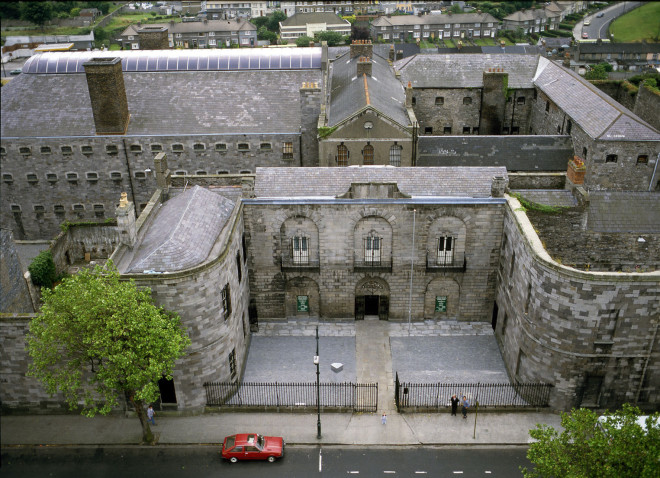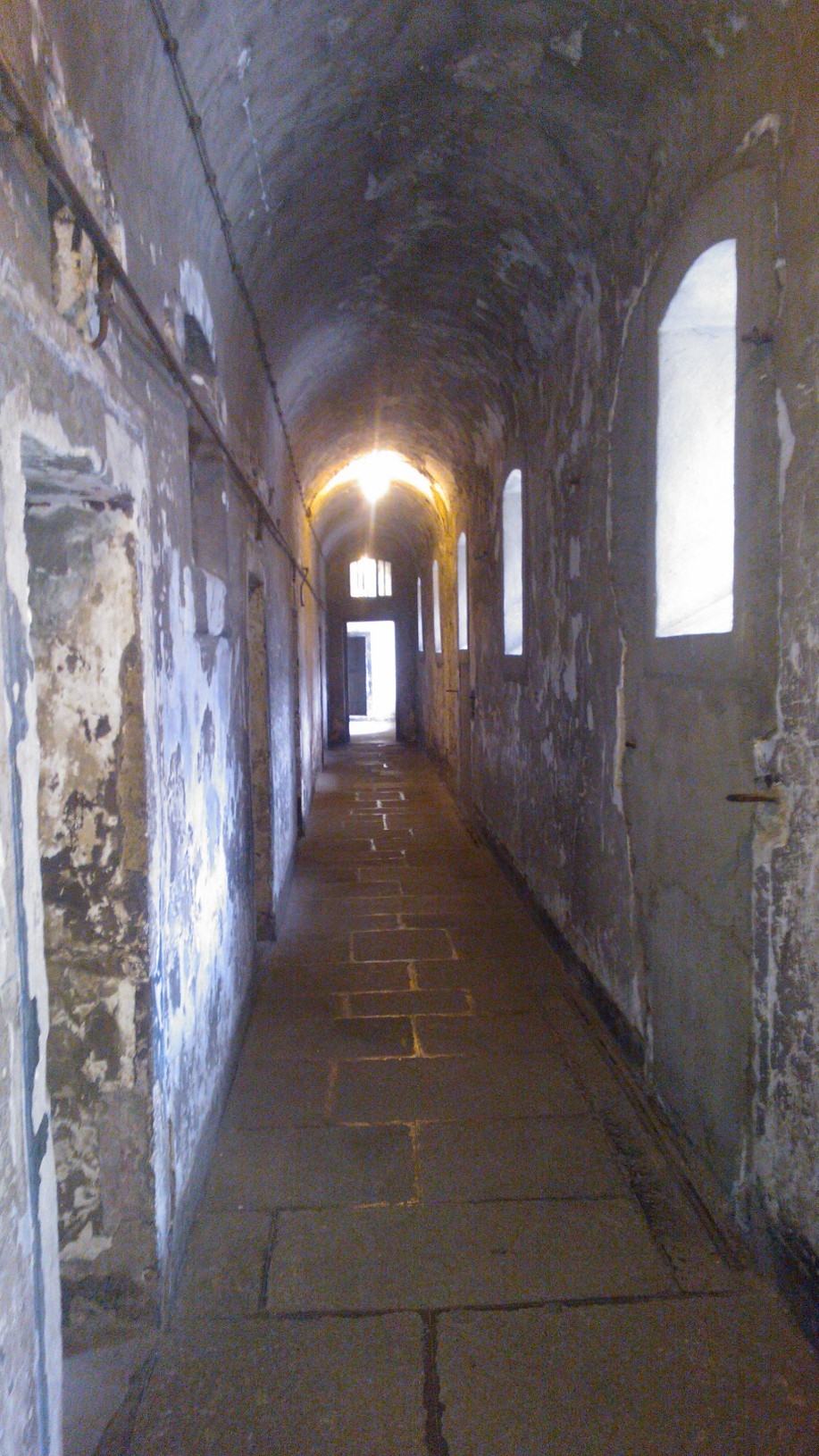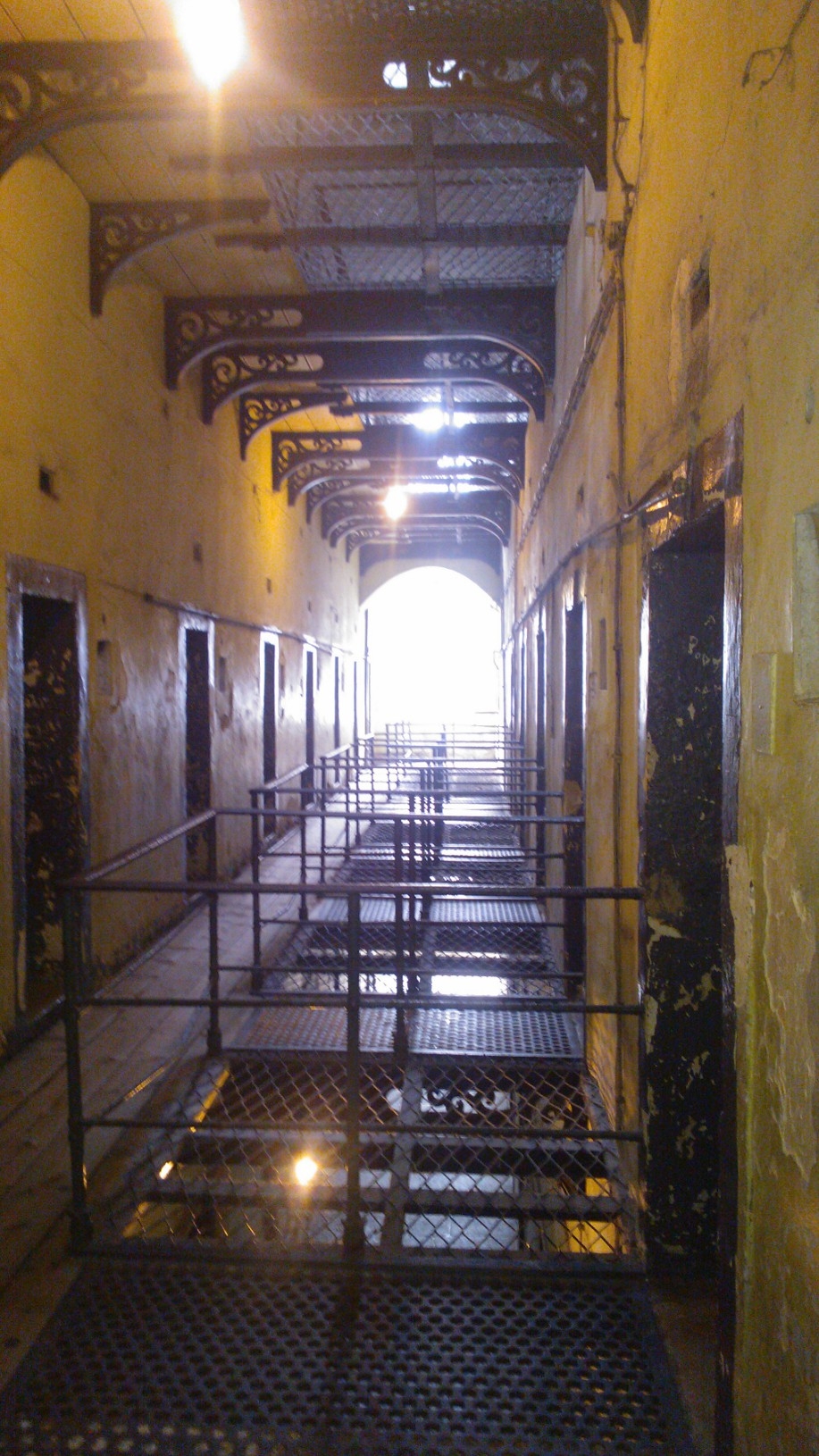
Kilmainham Gaol – A History & A Future
As it was a beautiful day, last week I decided to make my way down to Kilmainham to see how far the latest work on both the Goal and Courthouse has progressed. I was greeted by a very friendly member of staff, a tour guide. It was beginning to get late but just the same, he offered me a tour around the oldest part of the jail, the West Wing. The East Wing was closed for renovation at the time but has since reopened.At the time of writing, the Kilmainham Gaol’s East Wing’s Roof has been completely redone.
On the 12th July, the Gaol’s Museum will close for adaptation and upgrading as part of the project to get the Courthouse and Gaol ready for visitors who will be celebrating the Centenary of the 1916 Rising next year. It is expected, all going well, to re-open next January/February 2016 with these new modifications.
“These works, as well as the major restoration of Richmond Barracks in Inchicore show that Dublin 8 is going to be an integral part of the centenary commemoration project. It is great to see that with the new Dublin Discovery Trails, tourists, as well as local people, will be able to download the Dublin Discovery Trails app on their phone and take off on one of four especially themed walking routes and learn about the story of Dublin,” said Fine Gael Dublin South Central TD, Catherine Byrne.
“One of the routes, called ‘Echoes of War’, brings visitors to explore Kilmainham and the surrounding parklands and discover moving stories of war and rebellion with stops including the Royal Hospital Kilmainham, Kilmainham Gaol, the Irish National War Memorial Gardens and Collins Barracks. The other routes look at the overall history of Dublin, the period of the British Empire and the 1916 Easter Rising; including Christ Church, St. Audoen’s Church and St. Patrick’s Cathedral among many other attractions.”
The foundation stone of Kilmainham Gaol was laid in 1787 and took nine years to complete opening in 1796. The Gaol, the Irish Bastille, has a fascinating and pertinent history. It was one of the more active prisons in Ireland during its 124 year life. Looking back at its illustrious “guests”, it was a sign that you were doing something right if you were a political prisoner in this particular establishment! From the early United Irishmen Henry Joy Mc Cracken right through to the Rising leaders. It was designed by a Scottish engineer and an architect named John Trail. There are two main wings: The East Wing and the West Wing.
The West Wing, the older of the two, I found exceptionally gloomy and dark corner of the jail. The windows light the halls, but the cells are dark and devoid of sunlight. This would have been very cold during the winter and undoubtly, overcrowded, even the late 18th century was not known for its enlightened treatment of prisoners. Many prisoners, mostly woman and children (as young as five years-old) were asked to sleep in the hall ways. The limestone covered walls caused many prisoners to die, as they discovered that the limestone became poisonous and released its poisonous vapours.
The Gaol was reformed based on ideas of John Howard, Jeremiah Fitzpatrick and Jeremy Bentham. The East Wing was built in 1862 during the Victorian prison reform period. The cells opened onto platforms, almost identical to the Pentonville Prison in England, but modelled on the panopticon model and were to encourage silence and separation to keep prisoners from rioting. The panopticon was first designed by English philosopher Jeremy Bentham. The idea behind the design was to have one watchman watching all the prisoners, but they can’t see the watchman or who he is watching. Even though it is impossible to watch that many prisoners at once, the notion that they are all being watched was to encourage good behaviour.
The Stonebreakers Yard was a conceived as a place for physical exercise usually taking the form of menial labour (hence the name). Sadly, it was also the place where some of the Goal’s greatest prisoners had to face the wall and leave this corporeal world. The site of course is now synonymous with the 1916 leaders’ executions. As I walked around it, there was a sombre air that after all these years had not dissipated.
The Goal closed its doors in 1910. But in 1916 reopened again for eight more years and finally closed for good in 1924.
In 1960, the Voluntary Kilmainham Gaol Restoration committee was established and it was decided to declare the Gaol an Irish National Monument. This was a monumental task (pun was intended!) and these were simply volunteers but such was the respect held for those past ghosts of the Gaol that people banded together. The Committee looked after the Gaol for thirty years before handing it over to the state in 1986. Now as we are approaching 2016, almost a hundred years since the Gaol closed its doors, visitors will be able to travel back in time and see how much those who went before endured. Both Kilmainham Gaol and the Courthouse will give us something to look forward to next year.
For more on the Gaol’s history please click here









